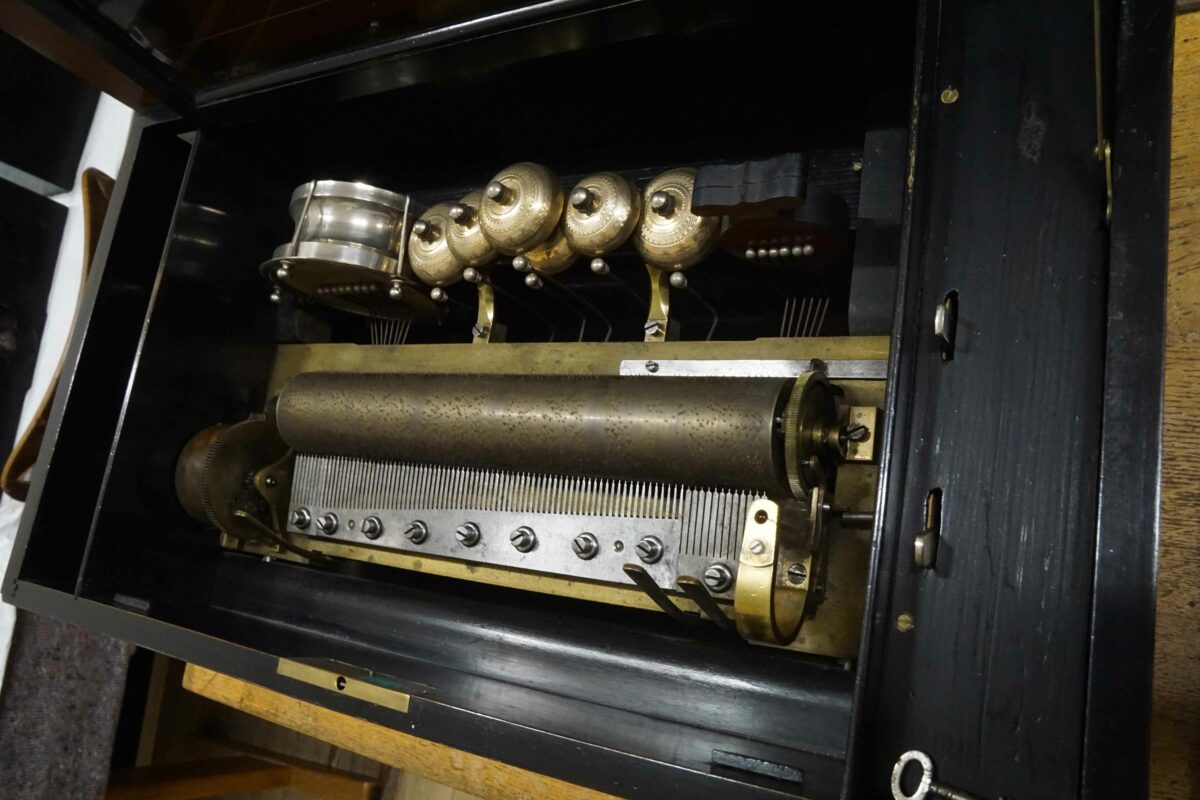Rolling Music Box

Rolling Music Box with additional percussion idiophones, Sainte-Croix, Switzerland, around 1895.
Courtesy of Museum für Kunst und Gewerbe Hamburg
The first cylinder music boxes were made by watchmakers in the Swiss Jura. On the remote high plateau close to France, a bunch of idiosyncratic characters gathered: people who rejected any form of hierarchy, whether at work or in life. Apparently, there was a deeper affinity between the advocates of equality and watchmaking. One reason could be that every cog, spring and screw counts equally in the apparatus.
Among the most important customers of the watchmakers was the Chinese imperial family. And that’s saying something, because China showed little interest in Western products at the time. In this model, the cylinder can be replaced for the box to play different melodies.
Piotr Kropotkin, a Russian prince and theorist of anarchism, spent many years in exile in Switzerland. While there, he visited the Jura to study the ways of life and work of the watchmakers. In his essays on “Mutual Aid” (1902), Kropotkin praised solidarity as an alternative to the Darwinian “survival of the fittest”. Like clocks and music boxes, this idea found its way to China. Kropotkin’s writings were translated by Chinese intellectuals in exile in Paris and served as a source of inspiration for the Communist Party.